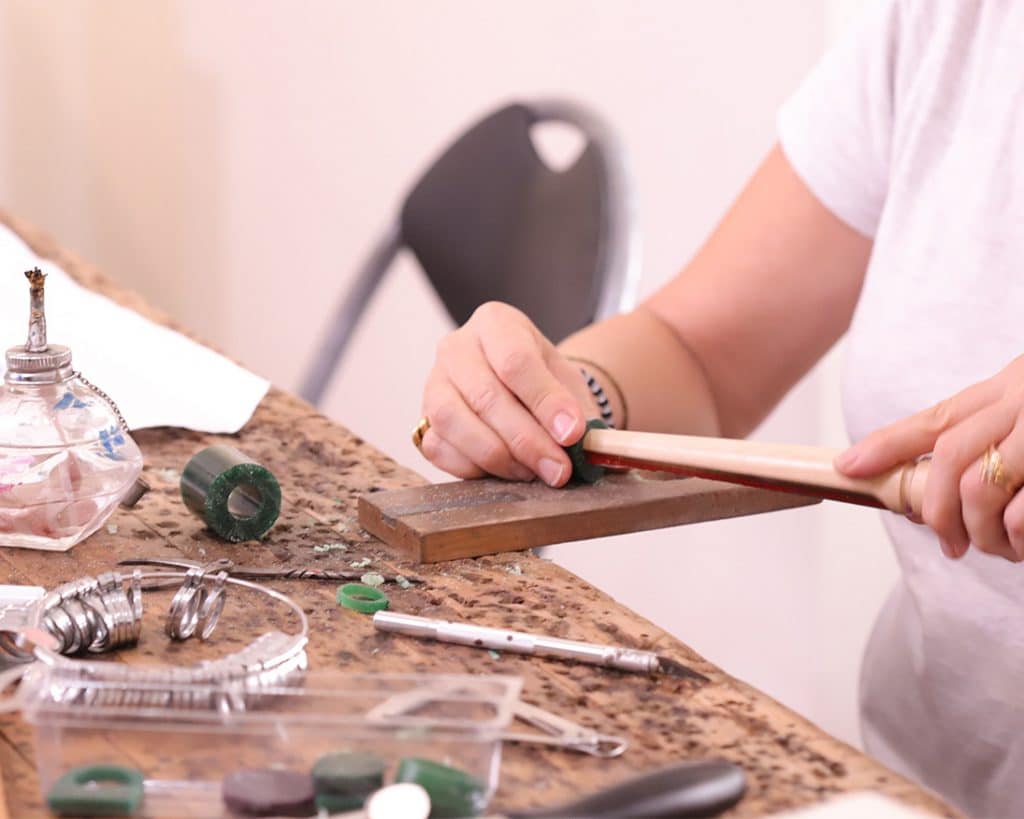Introduction
Silversmithing. The very word evokes images of molten silver flowing into intricate molds, artisans hammering with precision, and delicate creations crafted with love. But have you ever wondered how silversmithing techniques changed over the years? From ancient civilizations to today’s cutting-edge tools, silversmithing has undergone an incredible transformation. Let’s dive into the fascinating evolution of this timeless craft.
The Early Days of Silversmithing: Where It All Began
The origins of silversmithing date back over 5,000 years. Ancient civilizations like the Egyptians, Mesopotamians, and Greeks were among the first to work with silver, creating stunning jewelry, coins, and ceremonial objects.
-
Techniques Used:
- Hand-Hammering: Artisans shaped silver by striking it repeatedly with a hammer.
- Repoussé and Chasing: Designs were raised on silver by hammering from the back (repoussé) and detailed from the front (chasing).
- Granulation: Tiny silver beads were fused to surfaces for ornate designs.
Without modern tools, silversmiths relied on fire, muscle memory, and primitive tools. It was a labor-intensive process, fueled by creativity and sheer determination.
The Renaissance Era: Art Meets Innovation
Fast forward to the Renaissance, and silversmithing was elevated to an art form. Europe became a hub for exquisite silverwork, with pieces commissioned by royalty and the elite.
-
What Changed?
- Advanced Tools: The invention of drawplates allowed smiths to create uniform wires, making filigree work more intricate.
- Decorative Techniques: Engraving, enameling, and gilding became popular, adding color and depth to designs.
- Collaborations: Silversmiths often worked alongside painters, sculptors, and architects, blending techniques and styles.
During this period, silver wasn’t just functional; it was a status symbol. Every piece told a story, reflecting the wealth and power of its owner.
The Industrial Revolution: The Game-Changer
How silversmithing techniques changed over the years became even more evident during the Industrial Revolution. Machines began to replace manual labor, making silverwork faster, cheaper, and more accessible.
-
Key Innovations:
- Electroplating: Developed in the 19th century, this technique allowed a thin layer of silver to be applied to base metals, creating affordable silver-plated items.
- Die-Casting: Intricate designs could now be mass-produced using molds, reducing the need for handwork.
- Machine-Engraving: Patterns and details were etched with precision, cutting production time dramatically.
While traditionalists lamented the loss of artisanal craftsmanship, the Industrial Revolution brought silver to the masses, democratizing luxury.
Modern Silversmithing: A Blend of Tradition and Technology
Today, silversmithing is a harmonious blend of ancient techniques and modern innovation. Artisans embrace both handcrafting and technology to push the boundaries of creativity.
-
What’s New?
- 3D Printing: Designers now use 3D printers to create prototypes or even final pieces, opening up endless possibilities.
- Laser Cutting: Precision tools like lasers allow for intricate detailing that was once unimaginable.
- Eco-Friendly Practices: Sustainability is a top priority, with many silversmiths using recycled silver and non-toxic chemicals.
Yet, despite all these advancements, many artisans remain rooted in tradition. Techniques like hand-hammering, filigree, and repoussé are still cherished, proving that some things never go out of style.
How Silversmithing Techniques Changed Over the Years: Key Takeaways
- Ancient Times: Hammering, repoussé, and granulation were the cornerstones of silverwork.
- Renaissance: Artistry and innovation flourished, with new tools and techniques elevating the craft.
- Industrial Revolution: Mass production and machine tools made silver more accessible, but at the cost of handmade artistry.
- Modern Era: Technology and tradition coexist, with sustainability and innovation shaping the future of silversmithing.
FAQs
1. What materials do modern silversmiths use?
Modern silversmiths primarily use sterling silver (silver 925), fine silver (99.9% pure), and recycled silver. Some also incorporate materials like stainless steel, polymer clay, and gemstones.
2. Are traditional silversmithing techniques still relevant?
Absolutely! Techniques like hand-hammering, filigree, and repoussé are still widely used, especially for bespoke and high-end pieces.
3. How has technology impacted silversmithing?
Technology like 3D printing, laser cutting, and electroplating has made silverwork more precise and innovative while reducing production time.
4. Can silversmithing be eco-friendly?
Yes! Many modern silversmiths use recycled silver, sustainable packaging, and non-toxic chemicals to minimize their environmental impact.
5. Is handmade silver jewelry more valuable than machine-made?
Handmade jewelry often holds more sentimental and artistic value due to its uniqueness and craftsmanship, though the monetary value depends on factors like materials and design complexity.
Conclusion
The evolution of silversmithing is a testament to human ingenuity and creativity. From the rudimentary tools of ancient civilizations to the cutting-edge technology of today, it’s clear that silversmithing techniques changed over the years in remarkable ways. Yet, the heart of this craft remains the same: a deep respect for artistry, precision, and storytelling.
